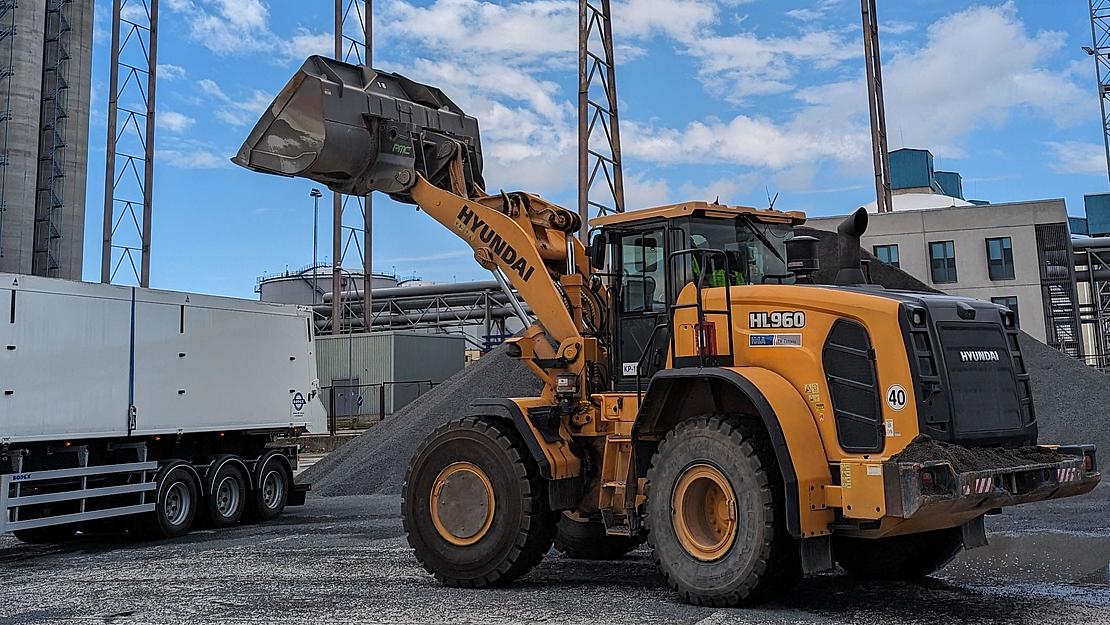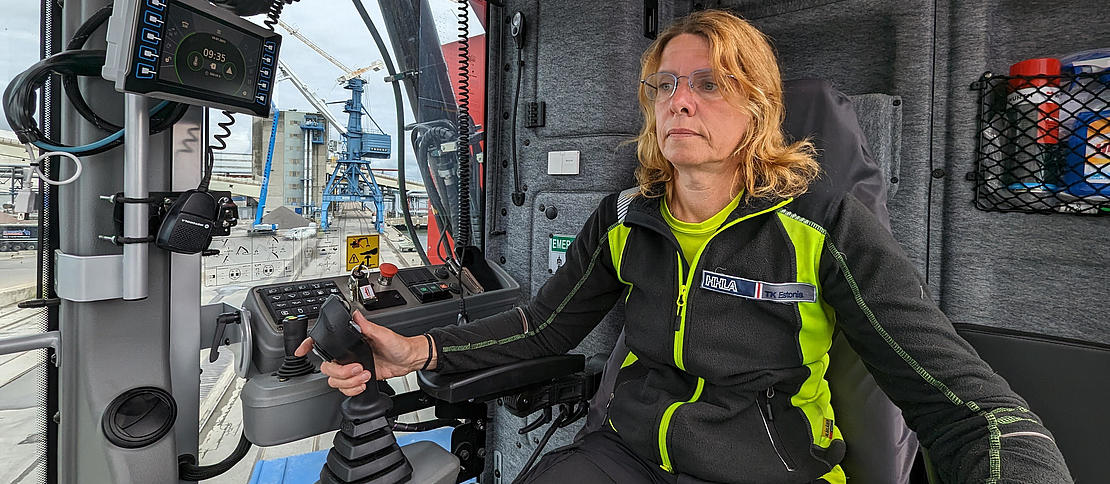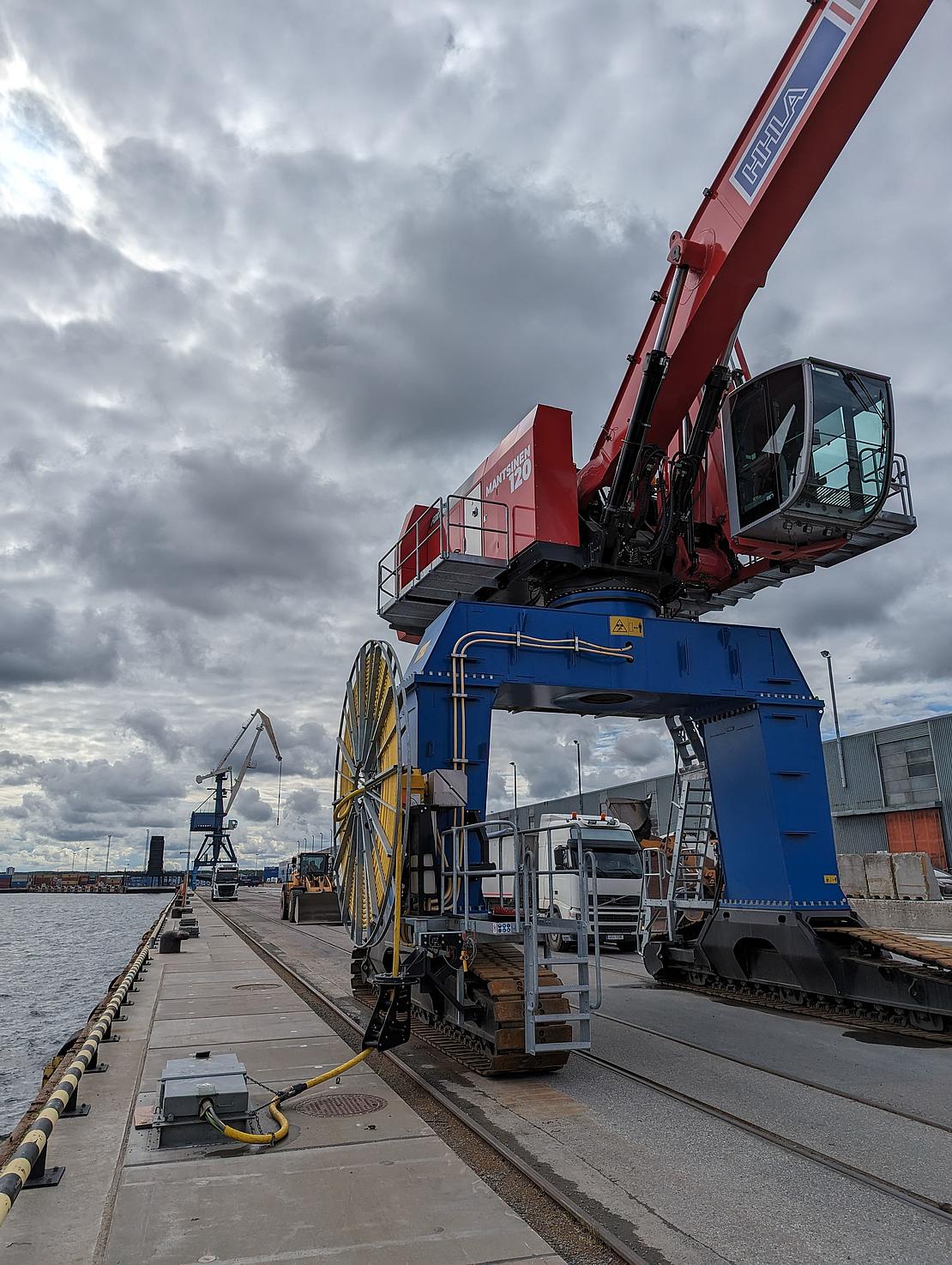
Liivika Mäemurd has finished her work for the day on the wheel loader. Using the bucket of the powerful machine, she piled up gravel and then loaded the construction material onto a dump truck. She is actually supposed to switch to the mobile crane that waits on the quayside of the Estonian port in Muuga, but she is stopped by a truck driver who asks if Liivika can quickly load his truck.
“I know all the truck drivers here, many of them since I was a child,” explains Liivika, crane operator at the Estonian port terminal of HHLA TK Estonia. She describes herself using the German word for her job, “Baggerfahrerin”, since she fluently speaks the language because she lived in Germany with her husband for a long time.
I know all the truck drivers here, many of them since I was a child.
Truck drivers in Estonia are mostly male, like Liivika’s father, who also drove excavators and dump trucks. In her childhood, her playground was the gravel pit near her parents’ home. She also got to ride in heavy machines early on, so she was able to meet her father’s colleagues and customers in this male-dominated industry.
Today, that is something very valuable for her and her employer, HHLA’s subsidiary near the Estonian capital of Tallinn. Truck drivers praise her abilities to load brand-new trucks accurately and very quickly without causing any scratches or damage to the paintwork.


However, at HHLA TK Estonia, she also has to operate brand new and even larger equipment. For example, the mobile port crane with dual power, which only seldom runs on diesel and is usually powered using energy from the company’s own solar roof.
The blue-red, brand-new device sticks out between the cranes at the dock. Liivika climbs all the way up to the driver’s cab, which has a few more signs, switches and buttons than a wheel loader. She needed to undergo additional training and acquire the required patterns for the heavy equipment, but she didn’t find that difficult.
Liivika, who had never worked at a port before, is very happy. She does have to drive 50 kilometres every day, but she couldn’t find the right job where she lives. Now, she can not only load dump trucks but also ships. The crane’s engine quietly starts and its bucket picks up gravel. Sometimes she also has to load grain or wood pellets. From time to time, Liivika takes a look at the Baltic Sea, which today is sending small waves to crash on the Estonian shore. That is so much better than excavating in a remote sand pit somewhere inland!
Published 27.09.2023

Curious about us?
They have a lot to say – from the port, from the past, from their day-to-day work or from abroad.
Read more